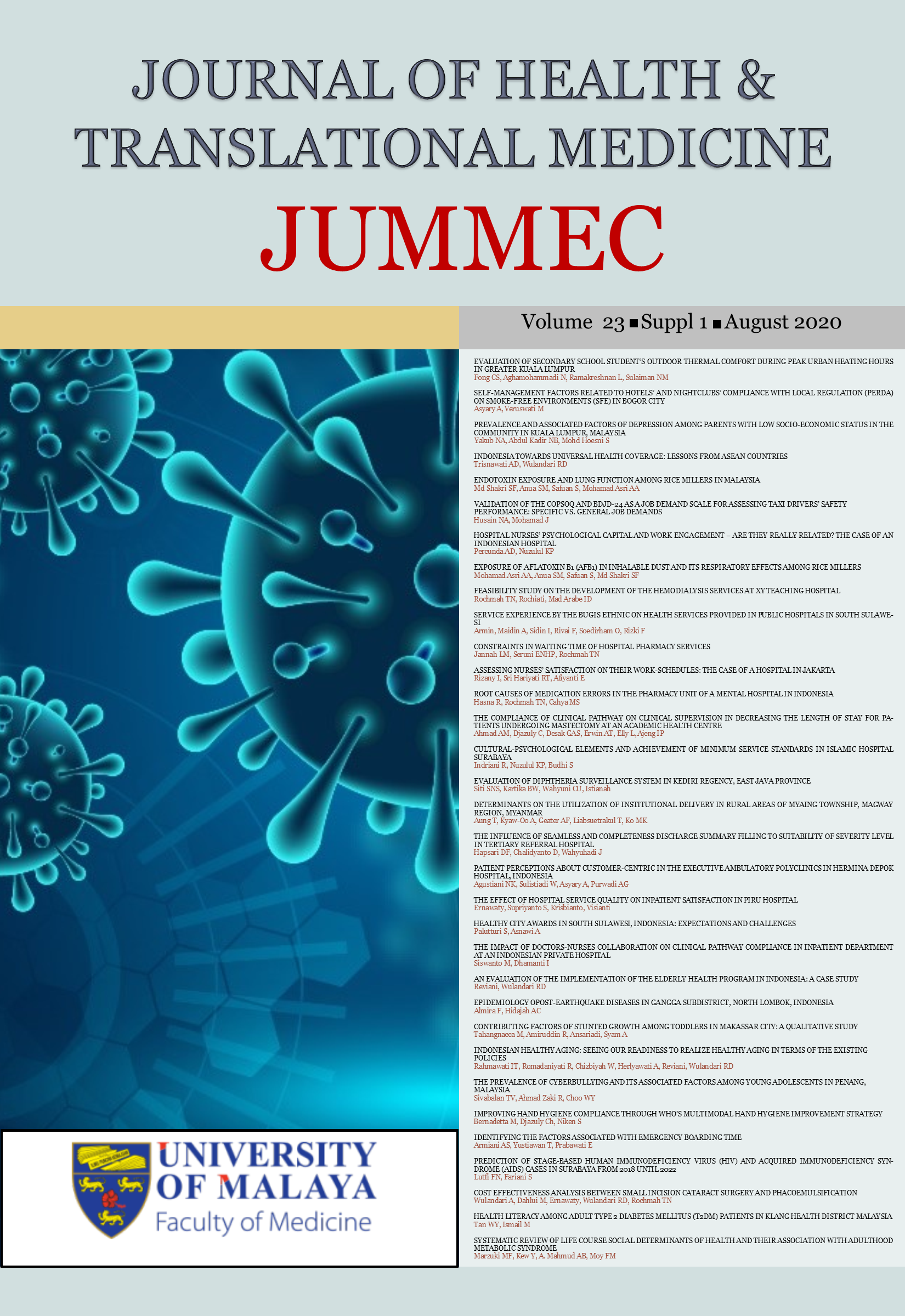EXPOSURE OF AFLATOXIN B1 (AFB1) IN INHALABLE DUST AND ITS RESPIRATORY EFFECTS AMONG RICE MILLERS
Keywords:
Aflatoxin B1, Airborne, Rice millers, Respiratory effectsAbstract
Introduction: Optimal humidity, temperature, improper handling and storage of rice will increase the likeliness of aflatoxin growth in the air. The most common and carcinogenic aflatoxin is Aflatoxin B1 (AFB1) that may cause lung cancer if inhaled. This study aims to associate the exposure of AFB1 in inhalable dust and its respiratory effects among rice millers.
Materials and Methods: This cross-sectional study utilised the purposive sampling method and recruited 76 rice millers as exposed subjects and 48 office workers as the control group. The total inhalable dust was collected using the filter-loaded air samplers for an eight working hours’ exposure. The subjects’ hands were swabbed with cotton pads wetted with 0.5 ml Phosphate buffered Saline Tween-20 solution post shift. The collected samples were analysed for AFB1 by using the ELISA kits. The questionnaire gathering information on sociodemographic, work data and respiratory symptoms were completed. The lung function test was performed for the pre- and post-shifts.
Results: The mean airborne AFB1 at the rice mill area and personal exposure were 2.22 ng/m3 ± 0.07 and 0.25 ng/m3 ± 0.24, respectively. The mean contamination level of AFB1 on hands was 0.25 ng/ml detected on two rice millers (2.3%) while non-detectable in non-exposed workers. The most complained symptoms among rice millers were wheezing and breathlessness (n = 6, 9.2%). There was a significant difference in the mean forced expiration volume (FEV1) for pre- and post-shifts between rice millers and the non-exposed workers, but no significant correlation between the mean AFB1 concentration and lung function. Age and work factors were confounders in lung function.
Conclusion: Despite no association being established in this study, the promotion of wearing suitable personal protective equipment (PPE) is highly recommended to prevent cumulative exposure among the rice millers.
Downloads
Downloads
Published
Issue
Section
License
All authors agree that the article, if editorially accepted for publication, shall be licensed under the Creative Commons Attribution License 4.0 to allow others to freely access, copy and use research provided the author is correctly attributed, unless otherwise stated. All articles are available online without charge or other barriers to access. However, anyone wishing to reproduce large quantities of an article (250+) should inform the publisher. Any opinion expressed in the articles are those of the authors and do not reflect that of the University of Malaya, 50603 Kuala Lumpur, Malaysia.


